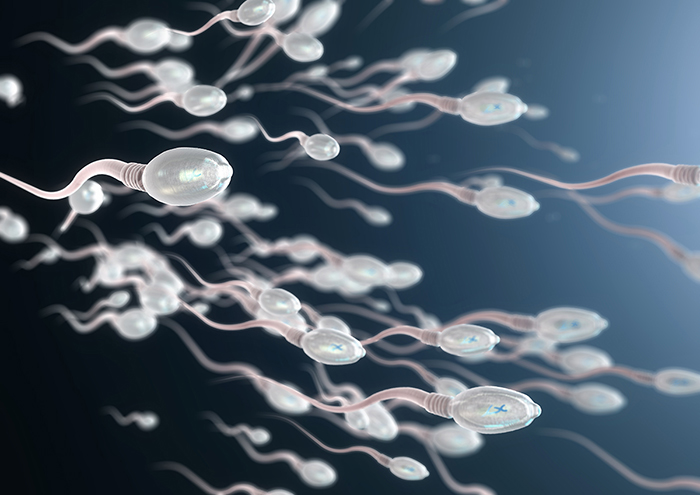Findings could inform efforts to understand infertility in human males

The mouse X chromosome contains two amplicons—regions in which a single gene is copied multiple times—that appear to control male fertility and offspring sex ratios, an NIH-funded study suggests. The findings could provide insight into male infertility among humans.
Removing one of the amplicons from mice favored male offspring by a ratio of 60 to 40, and removing both eliminated the ability to produce sperm. Increasing the number of genes in both amplicons favored female offspring, 60 to 40.
The study was conducted by Alyssa N. Kruger, a Ph.D. candidate at the University of Michigan School of Medicine and colleagues. It appears in Current Biology. The study was funded by the National Science Foundation and NIH’s Eunice Kennedy Shriver National Institute of Child Health and Human Development and National Institute of General Medical Sciences.
Background
Among the 23 pairs of human chromosomes, females have two X chromosomes and males have an X and Y chromosome. In humans and most other mammals, males determine the sex of the offspring. Egg cells contain one X chromosome, while sperm contain either an X chromosome or a Y chromosome. The combination of the two determines the sex of the offspring.
The researchers investigated two amplicons on the mouse X chromosome: one made up of multiple copies of the gene slx, the other composed of copies of the gene slxl1.
Results
The researchers developed mice in which both amplicons were deleted. This resulted in male mice that were infertile. Although the animals produced a small amount of sperm, the cells failed to develop normally, remaining round rather than elongated and without the tail-shaped structures that move them forward.
Researchers also developed a group of mice lacking the slx amplicon and another group lacking slxl1. Each group developed normally and produced normal quantities of sperm. Mice without these gene alterations produced offspring that were roughly 50 percent male and 50 percent female. However, the mice lacking slxl1 produced roughly 60 percent male offspring and 40 percent female offspring, even though they produced equal numbers of X-bearing sperm and Y-bearing sperm. Mice with duplicate copies of slx and slx1 produced roughly 60 percent male offspring and 40 percent female offspring.
Significance
Because removal of slxl1 results in fewer female offspring, the researchers believe this amplicon may control the development of X-bearing sperm. "This suggests to us that this gene is affecting the relative fitness of X versus Y sperm, but we don't know how,” Ms. Kruger said. “Maybe the Y-bearing sperm are swimming faster or in a straighter line.” Similarly, increasing slxl1 increases the proportion of female offspring, suggesting it enhances the fitness of X-bearing sperm.
The findings may yield insights into the function of genes controlling human sperm production and the causes of male infertility.
Reference
Kruger AN, et al. A neofunctionalized X-linked ampliconic gene family is essential for male fertility and equal sex ratio in mice. Current Biology. 2019. https://doi.org/10.1016/j.cub.2019.08.057 

 BACK TO TOP
BACK TO TOP